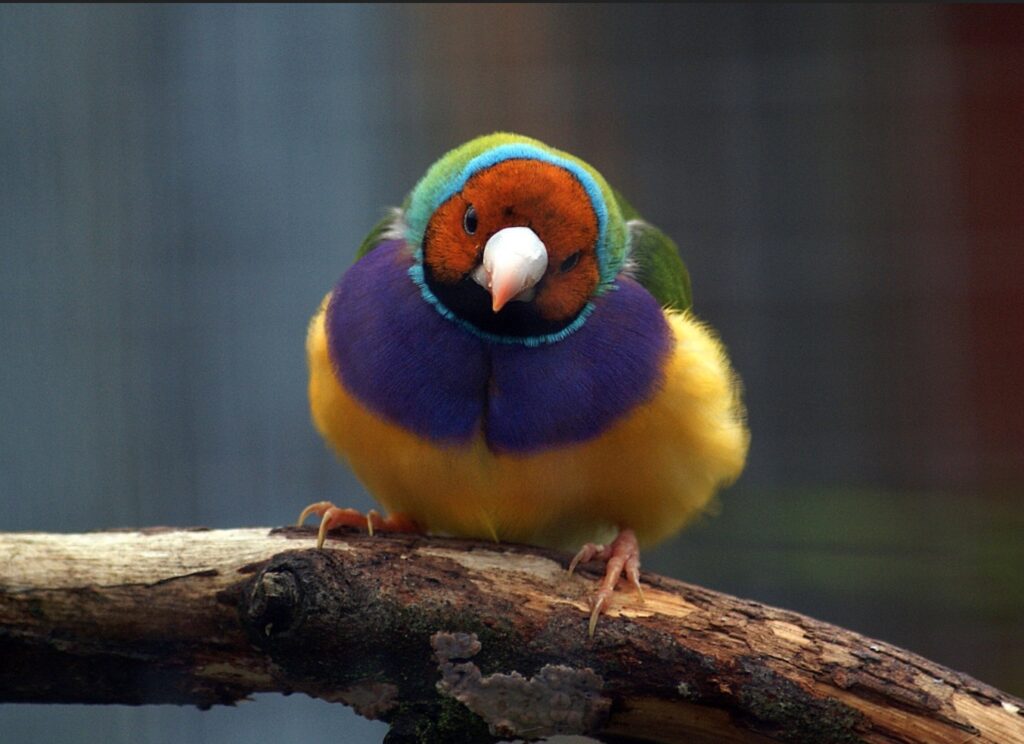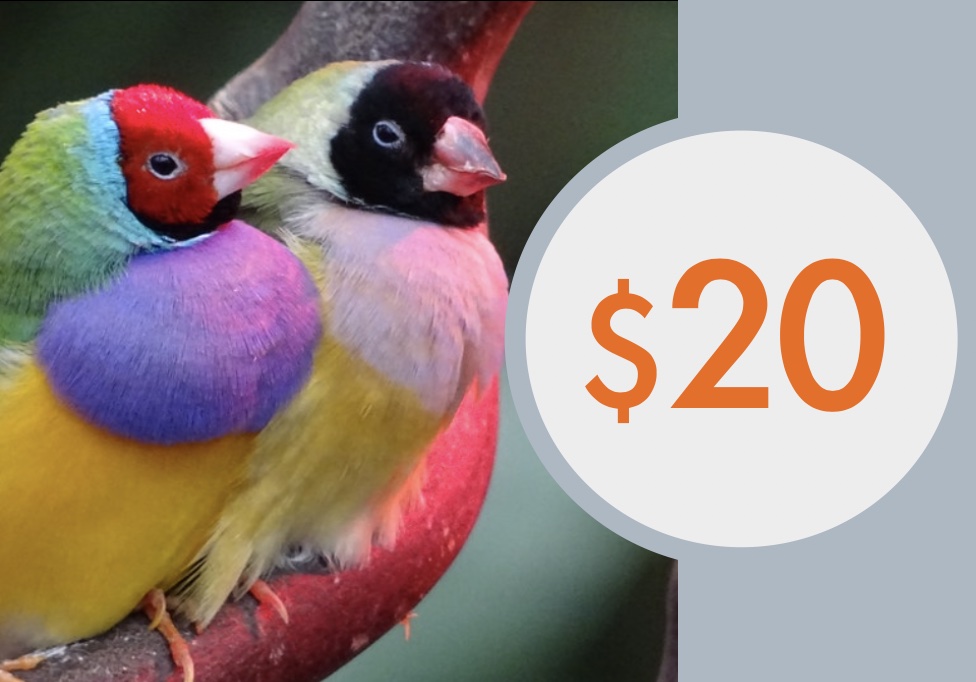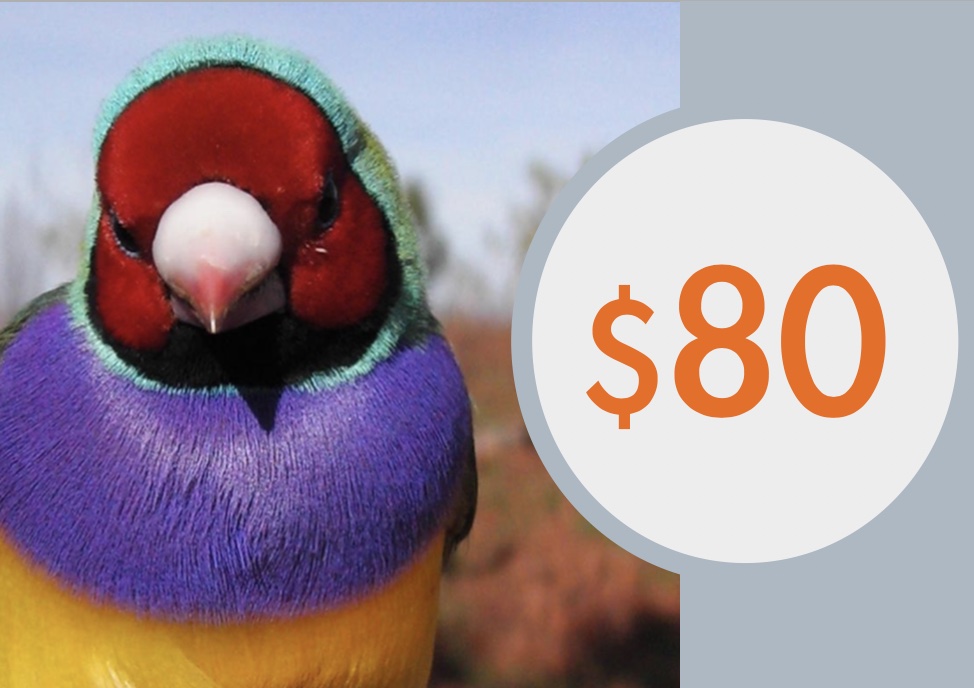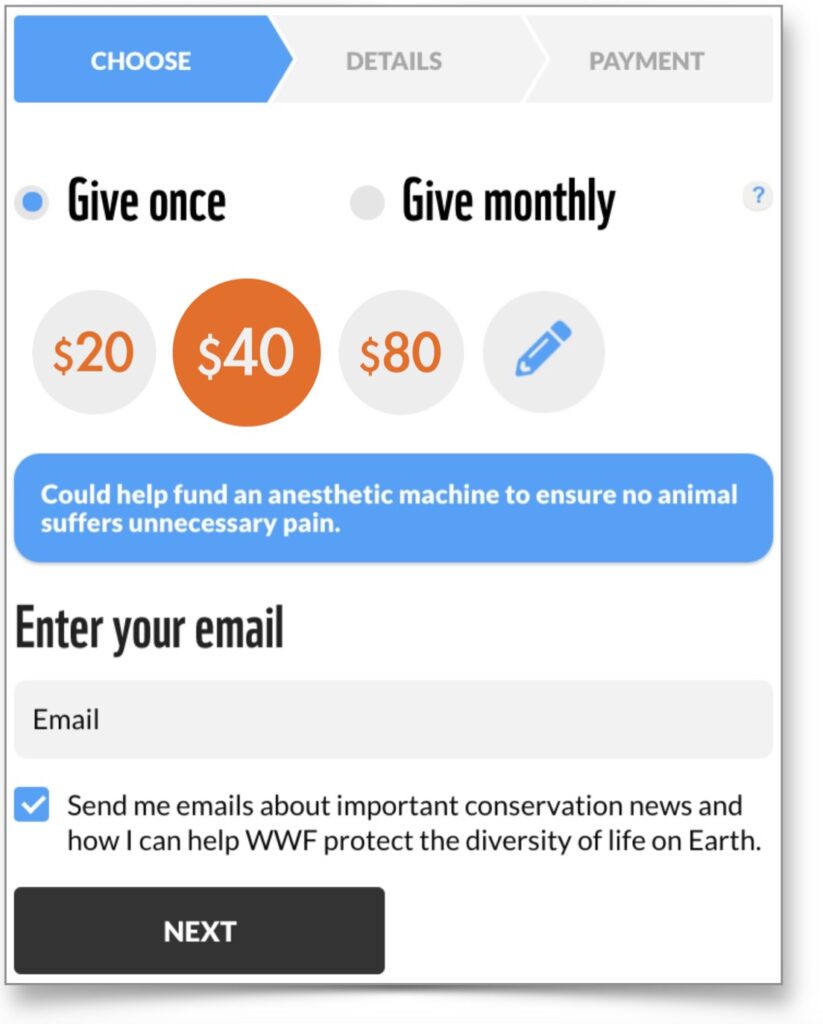Gouldian Finch. Source: www.pinterest.es/miaotato. Author: Elisabetta Corda
It is estimated that there are only as many as 2,500 left in the wild, with the species in decline.
The Gouldian Finch – aka Lady Gouldian Finch, Gould’s Finch or Rainbow Finch, unlike other Australian finches, nest in tree hollows or holes in termite nests. Outside of breeding season, Gouldian Finches will join mixed flocks of other finch species to deter predators by the sheer volume of birds. The biggest threats to the species are fires, diesease and predators, because of their brilliant colouring and inability to blend in to escape predators.

Tragically, beauty is one of the reasons this rare bird is endangered today.
Many believe the Gouldian Finch to be the most beautiful bird in Australia — if not the world.
Across northern Australia, their population dropped from hundreds of thousands to an estimated 2,400 left in the wild. Their striking plumage made them attractive to the aviary bird trade. Before a ban was finally put in place in the 1980s, they were trapped and sold without a thought given to their future.
Despite the ban, their wild population hasn’t recovered and they remain endangered today. What’s holding them back now is threats to their natural habitat from introduced species and changes in fire patterns.
Your donation

Mitigating threats -fencing off existing stands of Stringybark and Buloke and scattered paddock trees on the areas of cockatoo habitation, to protect from stock damage and to allow for natural regeneration. (Southern Australia, NSW)

Mitigating threats – supporting organisations to deliver large landscape-scale habitat and restoration projects; maintaining artificial nest sites of Red-tailed and Glossy Black Cocka. (Southern Australia, NSW)

Mitigating threats – reducing the impact of wildfire and prescribed burns on food productivity, Increase the area of Red-tail & Glossy Black Cockatoo’s feeding habitat by planting new stands of stringybark and Buloke. (Southern Australia, NSW)

GENEROS is one of Australia’s most trusted conservation organisations.
At GENEROS, we work in Australia to protect endangered species and habitats, meet the challenge of climate change, and build a world where people live in harmony with nature. This would not be possible without financial support from our community. Thank you!
















